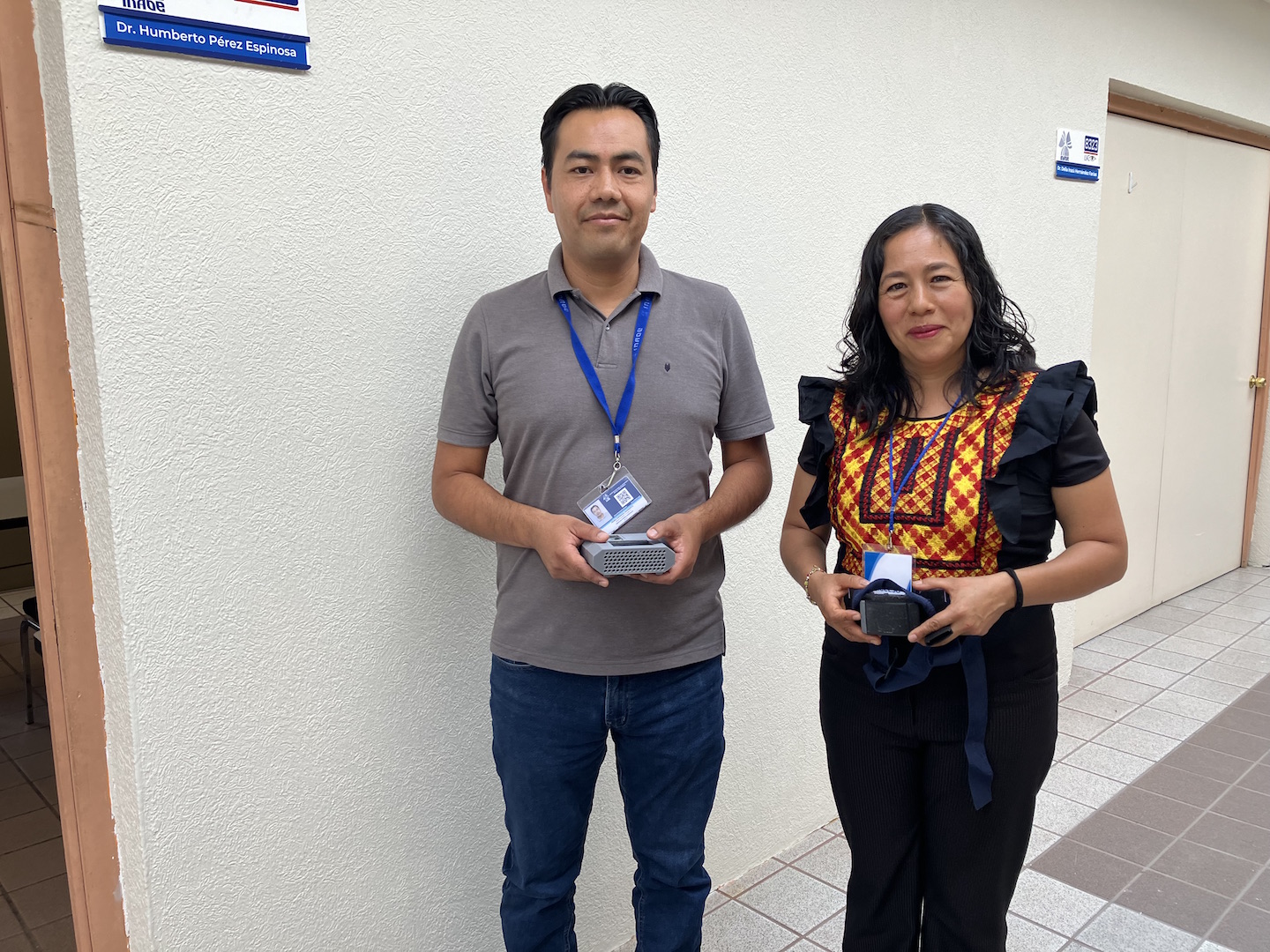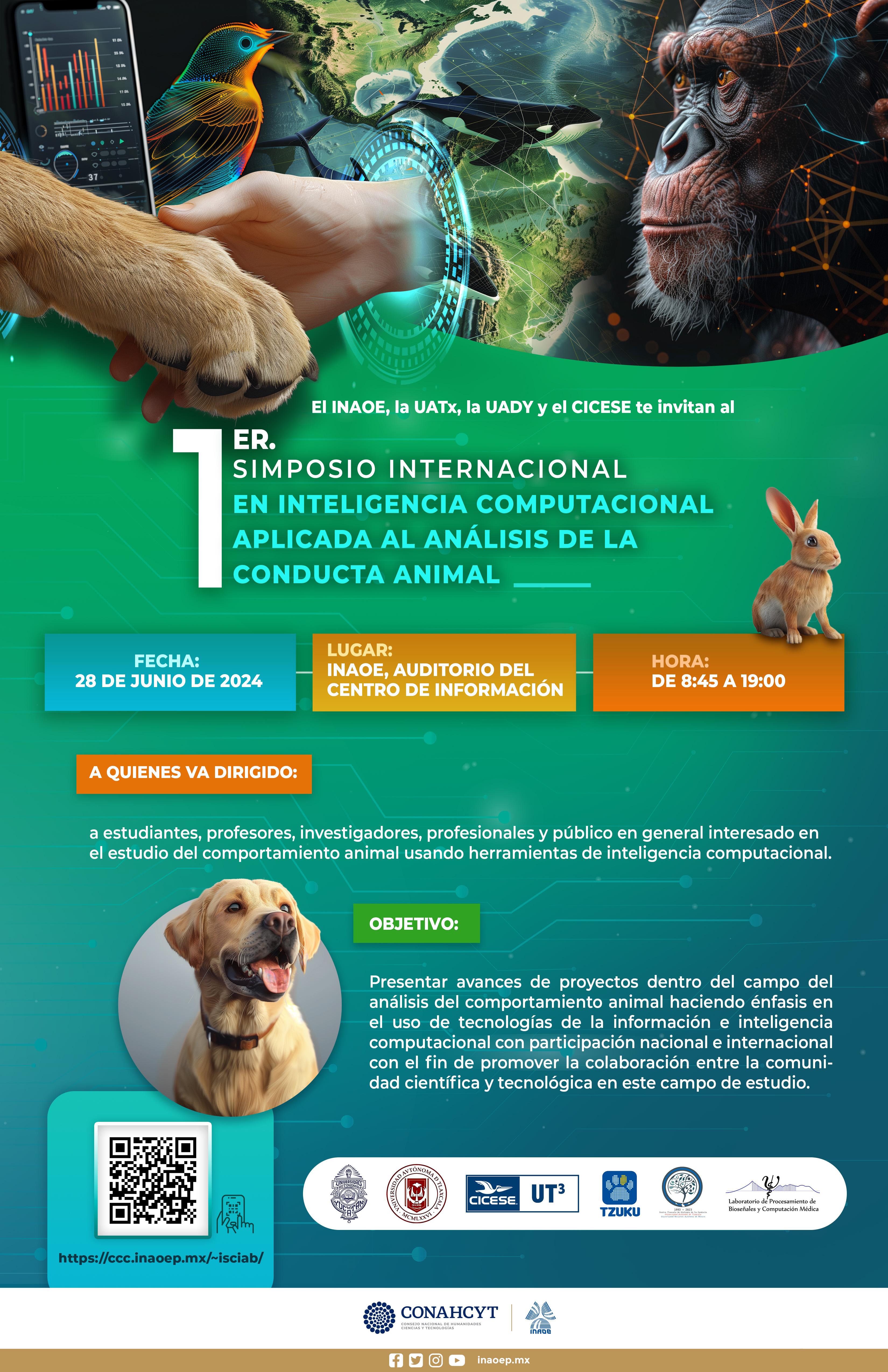1st International Symposium on Computational Intelligence applied to the Analysis of Animal Behavior
Santa María Tonantzintla, Puebla, April 30, 2024. Presenting advances in the field of animal behavior analysis through the use of information technologies and computational intelligence is one of the objectives of the 1st International Symposium on Computational Intelligence applied to the Analysis of Animal Behavior, which will take place on June 28 in Tonantzintla.
The Symposium is organized by the National Institute of Astrophysics, Optics and Electronics (INAOE) and the Center for Scientific Research and Higher Education of Ensenada Unidad Tepic (CICESE-UT3), centers coordinated by Conahcyt, as well as by the Autonomous University of Tlaxcala and the Autonomous University of Yucatán.
Dr. Humberto Pérez Espinosa, INAOE researcher, says that the symposium is part of a project that Conahcyt approved within the framework of the Border Science call in 2019, focused on the development of technology to support the selection of tasks, training and operation of search and assistance dogs.

We want “to inform about the progress we have made in the project and bring together people interested in these areas. Specialists from various disciplines converge here: on one hand, researchers who are dedicated to studying animal behavior and, on the other, computer and electronics researchers who develop tools, devices and artificial intelligence models to support the study of animal behavior. We were thinking about what the focus would be, at first we thought we would dedicate the symposium to dogs but then we opened it to animals in general.”
Dr. Verónica Reyes Meza, researcher at the Tlaxcala Center for Behavioral Biology of the Autonomous University of Tlaxcala, explains that the collaboration of computer scientists and biologists in this project has allowed animal behavior researchers to solve problems related to collecting and analysis of data.
“INAOE develops tools to solve many of our problems. For example, in wildlife registration and even in the laboratory we generate a lot of recording material of the animal, and in order to analyze its behavior we have to watch a video for hours, even in slow motion. This takes time and also adds observer fatigue. Computer scientists can generate algorithms to train a machine, which allows us to determine which segments of the video we need to analyze. This is one example among many. These tools help us collect data and do more efficient analysis,” she points out.
She adds that heart rate, body temperature and inertial sensors are used to collect the dog's physiological signals. Commercial equipment is usually expensive and it is not always designed for the size of the animal to be measured: “Our collaboration has been successful, now we can use precise and low-cost to collect these signals in dogs.”
For his part, Dr. Humberto Pérez adds that the developed devices automatically obtain, detect and process data about dogs, which provides relevant information about how trainable and obedient a canine is. CICESE-UT3, the UADY and INAOE developed comfortable, flexible and small devices to measure heart rate and temperature and that also have GPS, accelerometers, magnetometers and gyroscope to detect movements, and to measure the environmental conditions and monitor a dog's physical and emotional state.
On the other hand, the Autonomous University of Tlaxcala designed the technology validation protocols with dogs. “We also collected signals from 25 dogs in different contexts and now we are characterizing the patterns or changes in heart rate and temperature that occur when the dog is at rest, stressed, happy, etc.,” says Dr. Reyes Meza.
Dr. Humberto Pérez adds that they also worked with assistance dog trainers for people with depression or epilepsy. In this case, the canines are trained to warn of a dangerous situation by barking with a specific pattern: “We developed a device that follows the same idea as the Alexa assistant since it captures the ambient sound and discriminates sounds of interest. In our case, the system is capable of detecting the vocal patterns that the trainer taught the dog to warn of a possible emergency and send an alarm signal over the Internet to the caregivers.”
Regarding the Symposium, Dr. Pérez Espinosa notifies that there will be two keynote conferences: one by Dr. Ilyena Hirskyj-Douglas, from the University of Glasgow, Scotland, who will talk about the future and the challenges in the development of technology for non-users. humans, and another by Dr. Claudia Fugazza, from Eötvös Loránd University (ELTE), in Budapest, Hungary, who will speak on what the study of social learning in dogs tells us about social cognition.
Likewise, researchers from different universities and research centers will give talks, several plenary conferences will be offered and there will be presentation of posters and demonstrations of the devices that have been developed in the Conahcyt project and at the Center for Emotional Support and Occupational Therapy with Animals of the BUAP, where they have canine co-therapists that help students who are under stress or have an emotional problem.
Dr. Reyes Meza comments that, although the topics to be discussed are specialized, the organizers' idea is to “make this an event that is more of a dissemination nature because, if it were exclusively for computer people, we ethologists would not understand, and backwards. The idea is that they are for anyone interested in the topics that will be discussed.
To conclude, Dr. Humberto Pérez notifies that the format of the symposium will be hybrid. Space will be limited for the in-person format, but not for online works.
For more information about the 1st International Symposium on Computational Intelligence Applied to Animal Behavior Analysis, consult https://ccc.inaoep.mx/~isciab/
Luis Enrique Erro # 1, Tonantzintla, Puebla, México, Código Postal 72840, Tel: (222) 266.31.00, difusion@inaoep.mx
This work is licensed under a Creative Commons Attribution-NonCommercial-NoDerivs 2.5 Mexico License.



